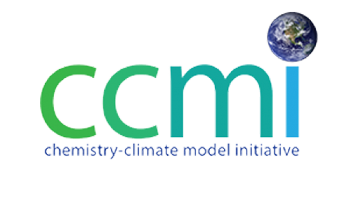Chemistry-Climate Model Initiative (CCMI)
Increasingly, the chemistry and dynamics of the stratosphere and troposphere are being studied and modeled as a single entity in global models. As evidence, in support of the Intergovernmental Panel on Climate Change Fifth Assessment Report (IPCC AR5), several groups performed simulations in the Coupled Model Intercomparison Project Phase 5 (CMIP5) using global models with interactive chemistry spanning the surface through the stratosphere and above. In addition, tropospheric and stratospheric global chemistry-climate models are continuously being challenged by new observations and process analyses. Some recent intercomparison exercises have for example highlighted shortcomings in our understanding and/or modeling of long-term ozone trends and methane lifetime. Furthermore, there is growing interest in the impact of stratospheric ozone changes on tropospheric chemistry via both ozone fluxes (e.g. from the projected strengthening of the Brewer-Dobson circulation) and actinic fluxes. This highlights that there is a need to better coordinate activities focusing on the two domains and to assess scientific questions in the context of the more comprehensive stratosphere-troposphere resolving models with chemistry. To address the issues, the joint IGAC/SPARC Chemistry-Climate Model Initiative (CCMI) was established to coordinate future (and to some extent existing) IGAC and SPARC chemistry-climate model evaluation and associated modeling activities. For more information, visit the CCMI site.
CCMI Community Evaluations
An overview of the CCMI reference and sensitivity simulations meant to address emerging science questions, improve process understanding, and support upcoming ozone and climate assessments can be accessed here.
